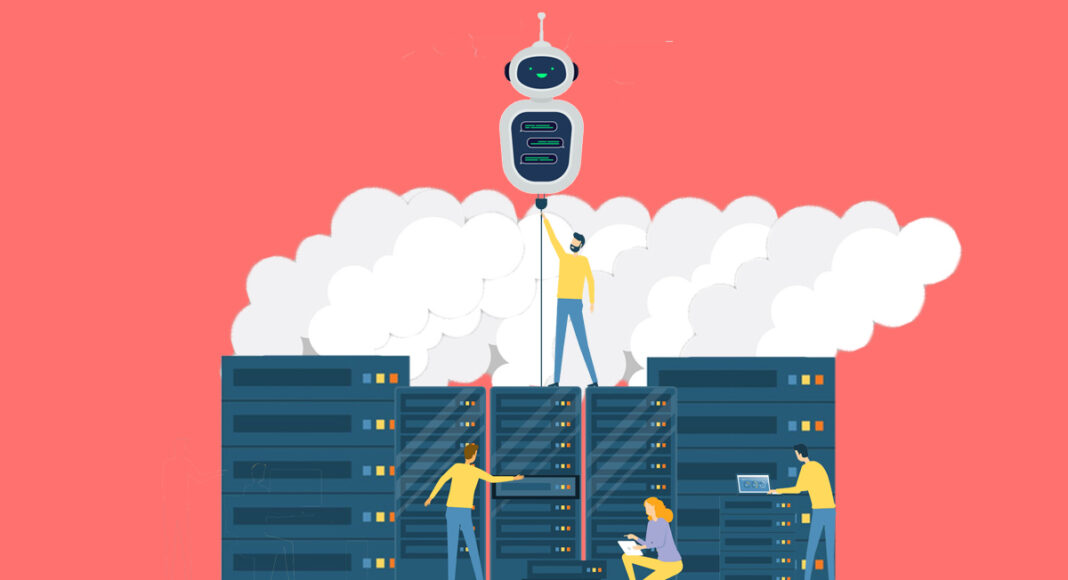Environmentally conscious critics of artificial intelligence worry about the massive amounts of energy and fresh water its data centers require. Alessio Terzi writes that in the long term, and with the help of government regulation, the benefits of AI-accelerated innovation will outweigh the short-term environmental costs we now observe.
The techno-optimism surrounding the surge of Artificial Intelligence (AI) is palpable. Enter, however, a classroom of sustainability master’s students, as I regularly do, and you will hear voices of complaint against what is perceived as a massively energy-intensive Silicon Valley toy with limited tangible upside for humanity’s pressing social and environmental challenges. Recent reports that data centers could consume as much electricity as Japan by 2026, and globally could require as much as half of the United Kingdom’s fresh water use by 2027, lend evidence to this concern. Consequently, several jurisdictions are considering curbs on new server farms, including Germany, China, Ireland and Singapore. A former French minister went so far as to suggest rationing access to the internet. If you care about climate action, should you be anti-AI?
Two considerations could help answer this question. First, it is important to recognize that the real promise of AI, as a general purpose technology, lies not in offering an immediate fix to all our predicaments but in accelerating technological progress, including in the realm of environmental sustainability. In the context of climate mitigation, the early applications of AI have already begun to demonstrate its potential. For instance, AI has helped to make air travel less dirty by reducing fuel consumption and the production of heat-trapping contrails, developing faster electric batteries, and helping reduce the reliance on critical raw materials, essential for the green transition but often associated with significant environmental and ethical concerns. Recently, AI helped solve a crucial hurdle related to plasma containment, representing an important step in the long road towards safe fusion energy use.
AI could help with climate adaptation too. Consider the fact that the spread of zoonotic diseases is a crucial risk stemming from climate change, and that AI is being deployed to accelerate the development of vaccines. Or that extreme weather events will become more frequent, with AI helping to improve weather forecasting, allowing life-saving early warnings.
The second fundamental consideration relates to energy use. Many national decarbonization strategies include plans to reduce energy consumption. However, as I’ve argued in a recent paper with energy economist Roger Fouquet, energy sobriety was always going to play a junior role in decarbonization strategies vis-à-vis the imperative to foster innovation. If history is any guide, it is worth noting that declines in energy consumption are very uncommon, temporary, and rarely happen by design. Typically, they only occur during wartime conditions, as has been the case in Europe since the Russian invasion of Ukraine in 2022, and are framed as acts of personal sacrifice in the interest of the greater good. Such reductions are not economically stable and cannot be perpetuated indefinitely without social disruption. In line with this reality, the International Energy Agency expects energy sobriety to contribute just 8% to carbon dioxide reductions in its roadmap towards Net Zero by 2050. Innovation offers the only credible pathway to permanently decouple economic activity from climate change and environmental degradation. When assessing the trade-offs between a short-term increase in energy use of AI and a medium-term boost in innovation, this element should be taken into account.
We are in the early stages of the AI revolution, implying that the technology is still being fine-tuned. If clear incentives are set right now, innovation can be designed to maximize energy efficiency, prioritize more efficient models, or minimize cooling needs. Indeed, while a command on OpenAI’s ChatGPT requires ten times the electricity of a Google search, it has been shown that it is possible to build a large language model similar to ChatGPT-3 with much lower emissions.
Which brings us to the importance of regulation. Rather than opting for outright bans to the construction of data centers, clear incentive structures should be put in place to steer AI innovation towards solutions that are not only commercially viable but also aligned with sustainability. This could start with clear environmental reporting requirements for AI companies and could extend all the way to legislation requiring only renewable energy sources be used for new data centers. Aware of the problem, tech behemoths are turning to AI itself also to improve the efficiency of their data centers, or pledging to make them carbon neutral by 2030. To do so, tech companies are developing strategic partnerships with energy companies, be they nuclear, geothermal, or solar and batteries. But voluntary measures should be complemented by regulation. Something both the United States and European Union are considering in recent bills.
Electrification was always expected to be a crucial component of the green transition, and therefore demand for electricity was inevitably set to increase as fossil fuels became progressively phased out. But part of the current predicament originates from the fact that it can take as little as one year to build a data center, and up to five years to build renewable energy facilities. This mismatch is aggravating the climate cost of AI, and in most cases is the result of poor regulation.
From a climate perspective, AI should neither be glorified nor vilified. Alone, it cannot install the necessary solar and wind capacities, promote a sustainable circular economy to reduce waste, or restore degraded ecosystems and biodiversity. These challenges require action by consumers, businesses, and governments navigating trade-offs between living standards, energy security, and sustainability. But AI can augment human ingenuity in finding a solution to these wicked problems.
Articles represent the opinions of their writers, not necessarily those of the University of Chicago, the Booth School of Business, or its faculty.






